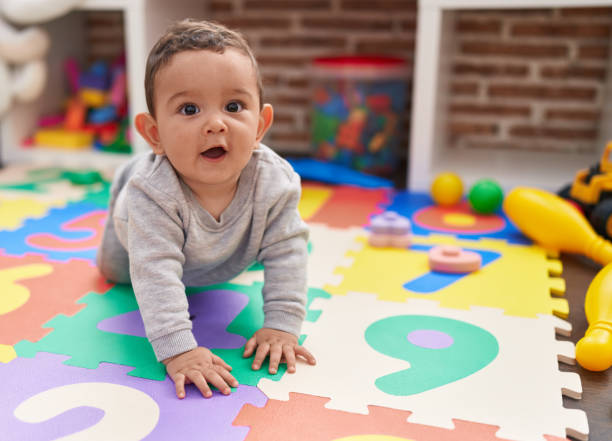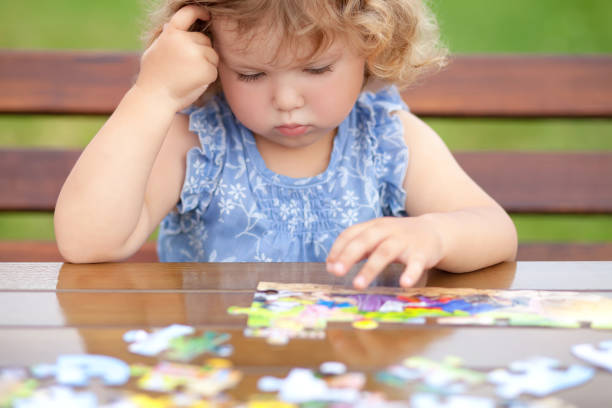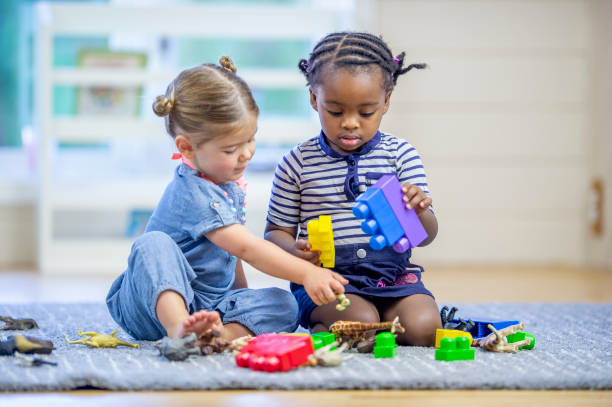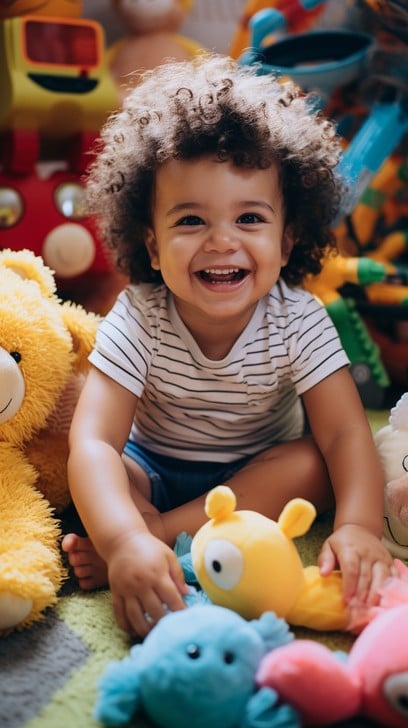Ever find yourself in a grocery store showdown with your toddler, who just realized the floor is a great place for a dramatic protest? You’re not alone, mama! We’ve all been there, questioning our strategies and feeling the weight of those judging eyes. Welcome to She Is A Good Mommy Blog, where we dive into the heart of parenting challenges with empathy and some solid advice.
Choosing a gentle approach to discipline is essential not only for your little one’s emotional growth but for nurturing a peaceful home environment. That’s why we’ve gathered 15 creative and compassionate ways to guide your toddler without resorting to hitting or yelling. From turning tantrums into teachable moments to fostering cooperation with a sprinkle of fun, we’ve got the tools you need for those tricky moments.
Ready to transform chaos into calm with strategies that truly work? Save this article for your next parenting adventure and become the role model your little one deserves!
1. Use Positive Reinforcement

Positive reinforcement is a powerful tool for guiding toddlers’ behavior without the need for harsh discipline. Imagine your little one finally putting away their toys after being asked multiple times. When that happens, shower them with praise: “Wow, you did such a great job cleaning up! I’m so proud of you!” This not only boosts their self-esteem but also encourages them to repeat the behavior.
Here’s how you can implement positive reinforcement effectively:
- Be specific with praise: Instead of saying “good job,” try “I love how you shared your toys with your sister!” This helps them understand exactly what they did right.
- Consistency is key: Make it a habit to recognize good behavior immediately, reinforcing the connection between the action and the reward.
- Use a reward system: Create a simple sticker chart for tasks like brushing teeth or getting dressed, and celebrate once they collect a certain number of stickers. 🎉
By focusing on what your child does right, you’ll foster a positive environment at home where both you and your toddler can thrive. Remember, every small step forward is a victory! 🌟
2. Set Clear Boundaries

Establishing clear boundaries is essential for toddlers who are just beginning to understand the world around them. As a mom, I’ve found that setting these boundaries early on helps create a sense of security and predictability for my little one. For instance, when we go to the park, I let my toddler know that we can play for thirty minutes and then head home for lunch. This consistency allows them to know what to expect and helps prevent meltdowns when it’s time to leave.
Here are a few steps to effectively set boundaries:
- Define the boundary clearly: Use simple language that your toddler can understand.
- Explain the reason: Give a brief explanation so they grasp the importance.
- Be consistent: Ensure you apply the same boundary every time the situation arises.
- Offer choices: Empower them with choices within the boundary, like choosing between two snacks.
Setting boundaries benefits both parents and children by fostering a respectful and harmonious relationship. It ensures children feel safe and loved, knowing that there are limits designed to protect them.
Remember, it’s all about balance. Clear boundaries guide your child while giving them the freedom to explore within safe limits. Keep going, mom—you’re doing a fantastic job! 🌟
3. Offer Choices Regularly
![]()
Offering choices to toddlers is a powerful way to foster independence while guiding behavior. As parents, we often find ourselves in power struggles, but presenting options can transform these moments into opportunities for growth. For instance, when Sarah noticed her three-year-old resisting bedtime, she started offering two pajama choices. This simple adjustment empowered her child and diffused potential tantrums.
Here’s how you can implement this strategy:
- Identify routine moments: Pinpoint daily tasks where choices can be integrated, like dressing or snack time.
- Limit options: Offer two or three choices to avoid overwhelming your toddler, ensuring both lead to acceptable outcomes.
- Stay consistent: Make offering choices a regular part of your routine to help your child feel more in control.
This approach benefits both parents and children. Kids learn decision-making skills and feel valued, while parents experience fewer power struggles and a more cooperative environment. 😊
Remember, the goal is not perfection but progress. Offering choices can transform challenging moments into opportunities for connection and growth. Keep trying, and you’ll see positive changes. 🌟
4. Implement Time-Outs

Time-outs can be a valuable tool when used correctly, offering a moment for both you and your toddler to cool down and reset. Picture this: your toddler, Sam, is throwing toys after being told not to. Instead of escalating the situation with shouting, calmly take Sam to a designated time-out spot—a cozy chair or a corner with a calming book.
Here’s how to make time-outs effective:
- Set a timer for one minute per year of age, ensuring the duration is manageable for your little one.
- Explain clearly why they are in time-out, so they understand the behavior that led to it.
- Once the time is up, have a gentle discussion about what happened and how to improve next time.
For parents, time-outs offer a breather to gather your thoughts and reduce stress. For children, they provide a chance to reflect on their actions in a non-threatening way. 🤔
Remember, consistency is key. With patience and practice, time-outs can become a peaceful part of your discipline toolkit, helping to nurture a more understanding and communicative relationship with your toddler. 🌟
5. Stay Consistent Always

Maintaining consistency in discipline teaches toddlers what to expect and helps them feel secure. As a mom, it might be tempting to overlook a behavior one day due to exhaustion or busy schedules, but sticking to your usual approach is crucial. If you consistently tell your little one not to draw on walls, but let it slide occasionally, they might get confused about the boundaries.
Here’s a real-life example: Sarah, a mom of two, found that setting clear rules and consistently applying them helped her children understand expectations. She created a simple chart with her toddler’s routine and rules, reinforcing them daily. This not only helped her toddler learn but also reduced tantrums as her child understood the consequences.
- Create clear, simple rules that are easy for your toddler to understand.
- Implement a routine that incorporates these rules consistently.
- Gently remind your child of the rules when they test the limits.
Consistency benefits parents by reducing stress and uncertainty, while children gain a sense of stability and trust. This balance fosters a nurturing environment where toddlers thrive. 🌟
Remember, consistency builds a foundation of trust and security, making both parenting and toddlerhood a more enjoyable journey. Keep going—you’ve got this! 💪
6. Redirect Their Energy

When your toddler is on the verge of a meltdown, sometimes all they need is a change of scenery or activity. Imagine a bustling afternoon where your little one is feeling overwhelmed. Instead of letting frustration boil over, try redirecting their energy to something engaging and positive. This simple shift can work wonders.
Start by offering an alternative activity that captures their interest. For example, if they’re throwing toys, suggest a fun game of stacking blocks or building a pillow fort. These activities not only distract them but also channel their energy in a constructive way. 🏗️
- Identify the trigger and swiftly propose a new activity.
- Keep the options simple and appealing—like playing with water or drawing with chalk.
- Engage with them to model enthusiasm and participation.
The benefits are twofold: you prevent a tantrum, and your child learns to cope with frustration creatively. Plus, shared activities strengthen your bond. 💞
Remember, redirection is a gentle yet effective discipline strategy that encourages positive behavior while preserving your peace of mind. Embrace these moments as opportunities to nurture creativity and resilience. You’ve got this! 🌟
7. Practice Patience Daily

Practicing patience daily can feel like a superpower for any parent navigating the ups and downs of toddlerhood. Imagine this: you’re in the grocery store, and your little one decides it’s the perfect place for a meltdown over a box of cookies. Instead of reacting with frustration, take a deep breath, get down to their level, and empathize with their feelings. “I know you really wanted those cookies, but we’re not buying them today.”
Building patience isn’t just about managing your own emotions—it’s about teaching your toddler how to manage theirs. Start with small steps:
- Pause before reacting: Give yourself a moment to consider your response.
- Practice mindfulness: Incorporate deep breathing or quick meditation sessions into your daily routine.
- Use positive language: Reframe requests with kindness and understanding.
By modeling patience, you’ll help your child learn to navigate their emotions calmly. This approach benefits everyone: you maintain your cool, and your child learns valuable life skills. 🌟
Remember, each calm response strengthens your parent-child bond. You’re doing an amazing job, and with practice, patience will become second nature. ❤️
8. Encourage Problem Solving

Encouraging problem-solving in toddlers is a powerful way to help them develop critical thinking skills and autonomy. As a mom, I remember when my daughter struggled to share toys with her cousin. Instead of stepping in immediately, I guided her through the process of finding a solution on her own. It was a learning moment for both of us.
Here’s how you can foster problem-solving skills:
- Start by identifying the problem together. Ask your toddler, “What happened?” This helps them articulate their feelings and the situation.
- Encourage brainstorming by suggesting a few options. Say, “What if we try this?” or “How about we do that?” This opens the door for creative solutions. 💡
- Let them decide on the best solution. It empowers them and builds confidence in their decision-making abilities.
The benefits are twofold: your child learns to navigate challenges independently, and you get to enjoy more peaceful interactions. 🎉
Remember, patience is key. Supporting your toddler as they learn to solve problems will nurture their independence and resilience. Keep guiding them gently, and you’ll both flourish in this journey. 🌱
9. Use Calm Tone

Maintaining a calm tone when disciplining your toddler can be transformative. Imagine your little one is upset because they can’t have a cookie before dinner. Instead of raising your voice, try sitting down to their level and speaking softly. This approach not only models how to handle frustrations calmly but also helps your child feel heard and understood.
Here’s how you can implement this:
- Take a deep breath: Before addressing the behavior, pause for a moment to collect your thoughts and ensure your voice is steady.
- Empathize first: Acknowledge their feelings with phrases like, “I see you’re upset because you really wanted that cookie.”
- Explain simply: Use short and clear sentences to explain why they can’t have what they want right now, like, “We eat cookies after dinner, not before.”
By using a gentle tone, you’re providing a sense of security and teaching your child effective communication skills. This method benefits both of you, as it reduces stress and encourages a cooperative atmosphere at home. 🎈
Remember, patience and consistency are your allies. With time, you’ll notice positive changes in your toddler’s behavior, making those challenging moments a bit easier to navigate. 💪
10. Model Good Behavior

As parents, we are our toddlers’ first and most influential teachers. Modeling good behavior is a powerful tool in guiding them towards understanding and adopting positive actions. Picture a mom named Lisa who always uses words like “please” and “thank you” even when she’s in a rush. Over time, her toddler starts mimicking these words, turning them into everyday habits. This simple act of modeling politeness teaches the child about respect and kindness without any lectures.
To incorporate this in your daily life, consider these steps:
- Demonstrate the behavior you wish to see, such as sharing toys or taking turns.
- Stay calm during stressful situations, showing how to handle emotions healthily.
- Use a soft voice when communicating, even when correcting mistakes. This sets a baseline for peaceful interactions.
The benefits of modeling good behavior extend beyond immediate compliance. It builds a foundation of trust and mutual respect, fostering a nurturing environment where your child feels safe to express themselves. 🌼
Remember, the small, everyday actions you take speak volumes. Keep showing them the way, and watch your toddler blossom into a kind and considerate individual. 💕
11. Create Routine Charts

Creating routine charts can be a game-changer in your parenting toolkit. Toddlers thrive on consistency, and having a visual schedule helps them understand what to expect each day. For instance, Sarah, a busy mom of two, found that a simple morning routine chart transformed chaotic mornings into calm, organized ones. 🏡
Here’s how you can get started:
- Identify key routines that need structure, like bedtime, mealtime, or getting ready in the morning.
- Create a simple chart using pictures or stickers representing each task—think brushing teeth, putting on pajamas, or having breakfast.
- Involve your toddler in the process. Let them help stick or draw the images, making it a fun, creative activity. 🎨
- Place the chart at toddler-eye level where they can easily see it.
- Use the chart consistently and offer praise when they follow it successfully.
For parents, routine charts reduce the need for constant reminders and arguments, while children gain independence and confidence as they learn to manage their day. 🕒
Remember, you’re not just managing tasks; you’re teaching lifelong skills. Keep it simple, stay patient, and celebrate small wins along the way! 🎉
12. Teach Empathy Early

Helping your toddler develop empathy can transform how they interact with the world 🌍. Start by modeling kind behavior and discussing feelings regularly. When Susie, a mom of two, noticed her toddler grabbing toys from others, she gently intervened. “How do you think your friend feels when you take their toy?” she asked. This simple question encouraged her child to pause and consider the impact of their actions.
Here’s how you can teach empathy at home:
- Use storytime 📚 as an opportunity. Discuss how characters might feel and why.
- Encourage sharing by praising your child when they exhibit kind gestures.
- Role-play different scenarios where your child can practice empathy.
Not only does this build stronger emotional connections, but it also fosters a more harmonious home. As your child learns empathy, they’ll become more patient and understanding, making parenting a bit smoother 😊.
Remember, teaching empathy is a journey, not a destination. With patience, you’ll see incredible growth in your child’s emotional intelligence and kindness. Keep nurturing that empathetic heart ❤️!
13. Reward Good Behavior

Celebrating your toddler’s good behavior is a wonderful way to reinforce positive actions and encourage them to make better choices. As a mom, I found that giving my child a sticker for every kind deed or act of cooperation worked wonders. We kept a sticker chart on the fridge, and it was amazing to see how motivated he became to earn his daily sticker 🌟.
Here are a few steps to implement this approach:
- Identify specific behaviors you want to encourage, such as sharing toys or saying “please” and “thank you.”
- Choose a reward system that’s visible and tangible, like stickers or a small toy.
- Consistently acknowledge these behaviors with the reward, ensuring your child understands why they are being rewarded.
This method not only helps toddlers associate good behavior with positive outcomes but also boosts their self-esteem and strengthens your bond. Witnessing their joy when they achieve their goals is a reward in itself for both of you.
By focusing on rewarding good behavior, you’re laying the groundwork for a harmonious relationship and a well-mannered child. Remember, every small step is a big win, and you’re doing great! 😊
14. Engage in Playtime

Engaging in playtime with your toddler is not only a joyful experience but also a powerful tool for discipline. Imagine a day when Emily, a mom of an energetic three-year-old, turned a potential meltdown into a bonding moment through play. As her son began to fuss over putting away toys, Emily suggested they become a “clean-up crew,” racing to see who could gather more toys. Suddenly, the chore transformed into a giggling competition. 🎉
Here’s how you can incorporate play into discipline:
- Observe: Notice what games or activities your child enjoys.
- Incorporate: Use these activities to redirect negative behavior. If your toddler loves dinosaurs, pretend to be dinosaurs that clean up after themselves.
- Participate: Get involved. Your enthusiasm will encourage your child to join in.
Playtime discipline benefits everyone. It reduces stress for parents and helps toddlers feel understood and connected. Plus, it teaches them to view rules as part of a fun, cooperative experience. 😊
Remember, laughter is a universal language that bridges gaps and mends moods. Embrace play as a pathway to a harmonious home. 💖
15. Explain Consequences Simply

When toddlers test boundaries, explaining consequences in simple terms helps them understand the direct link between actions and outcomes. Imagine your little one throws a toy during playtime. Instead of raising your voice, calmly explain, “If you throw your toy, we have to put it away for a while.” This approach gives them a clear cause-and-effect understanding. 🧸
Here’s a step-by-step approach to simplify consequences:
- Get down to their level and make eye contact. This shows you’re engaged and serious.
- Use simple language to explain the consequence of their action.
- Follow through consistently to reinforce the lesson.
By consistently explaining consequences, toddlers learn to anticipate outcomes, leading to better decision-making. For parents, it creates a calmer environment, reducing stress and frustration. 🌟
Remember, patience and consistency are key. This approach not only nurtures understanding but also strengthens the parent-child bond, making discipline a positive learning experience. Keep going, mama—you’re doing amazing! 🌈
As you navigate the journey of toddler discipline, remember the 15 gentle yet effective strategies that prioritize understanding, patience, and creativity. From setting clear boundaries and using time-ins, to implementing choices and natural consequences, each approach is designed to nurture your child’s emotional growth without resorting to hitting or yelling. Embrace positive reinforcement, foster open communication, and don’t forget the power of leading by example to shape your toddler’s behavior in a loving way.
Parenting is a beautiful, albeit challenging, adventure, and you’re not alone in it. With these strategies, you’re equipped to cultivate a more peaceful and supportive environment where both you and your toddler can thrive. Empower yourself with these tools, and remember, every small step forward is a victory.
Don’t let these invaluable tips slip away—pin this article now to keep these insights at your fingertips whenever you need them. Revisit them often, share with fellow parents, and watch as your relationship with your toddler blossoms.
You have the power to nurture your child’s heart and mind with kindness and patience. Here’s to a journey filled with love, learning, and laughter! 🌟

Hi, I’m Sarah West, the voice behind She Is a Good Mommy and a proud mom of two. Through this blog and my Pinterest community (@SheIsAGoodMommy), I share practical parenting hacks, fun toddler activities, and tips for balancing motherhood with self-care.
Parenting isn’t easy, but with positivity, patience, and practical strategies, it can be incredibly fulfilling. My goal is to support fellow moms with ideas and encouragement while reminding you to prioritize your well-being—you deserve it, Mama!

